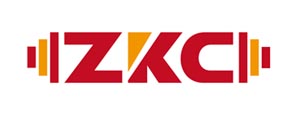Minimising The Risk of Taking Contaminated Supplements
Many athletes have blamed ‘supplement contamination’ for testing positive over recent years. With an abundance of products now available, it is becoming increasingly difficult to ensure that each and every one is free from banned substances. We recently received an email from Informed Sport asking us to publish an article on the subject to help athletes understand the possible risks involved with taking such substances and how they ensure that certain products are safe.
Research has shown that an untested product has a risk of approximately 1 in 4 being contaminated with steroids.
It is increasingly the case that athletes, both professional and amateur alike, must take supplements in order to compete at their desired level. However, there is an ever growing concern that supplements are the cause of a number of failed drug tests in the professional sporting arena, so that top athletes are simply advised not to take supplements – advice which is then commonly ignored.
Whilst some supplements are specifically designed to enhance performance via the inclusion of banned substances, the real concern behind the paranoia is not so much the knowledgable use of such products, but an issue of “unintended contamination” across the whole range of available supplements.
HFL Sport Science (which operates the Informed-Sport testing programme) carried out surveys in the USA in 2007 and in the UK in 2008 that revealed up to 25% of supplement products on shelves can, in fact, contain low levels of steroids and/or stimulants, none of which may be declared on the label. So – how do you address this risk of taking contaminated supplements?
WADA (the World Anti Doping Agency) take a firm stance – that it is the responsibility of the athlete to understand the risk of taking a supplement, advising elite athletes that they should simply not take supplements – recommending instead that a balanced diet will provide all of the necessary nutrition. However, it is clear that many supplements are indeed beneficial to performance, and many athletes take a variety of such supplements. Indeed, it is not at all clear that any successful athlete can effectively compete at their highest level without some form of supplementation (even if it is just a rehydration drink)!
The risk of taking contaminated supplements cannot be made to disappear. If this is the case, how do athletes minimise the risk when taking a supplement? The answer is to look for products that have been subjected to safeguards throughout the manufacturing process. This risk may not be eliminated, but it can be effectively managed.
Such safeguarding requires some basic good practice by manufacturers to ensure that products are not inadvertently contaminated:
1. Look for evidence that raw ingredients have been sourced with care – many ingredients are purchased cheaply from geographies with poor quality control.
2. Cleaning procedures at the manufacturing and packaging facilities must be capable of removing traces of possible banned contaminants to avoid cross contamination from product to product.
3. Products should be tested prior to release for sale for trace levels of banned substances by a reputable sports doping control lab, using tests accredited to the ISO 17025 standard. These tests should specify both the substances being looked for, and the levels that they will be found at (typically parts per billion levels!).
But unless you are an expert in such matters, how will you know? This is the purpose of the Informed-Sport testing programme.
The Informed-Sport testing programme, developed by HFL Sport Science (a world class anti doping laboratory based in the UK), provides a quality assurance programme allowing athletes and their connections to make a choice about the risks associated with the use of supplements. If the Informed-Sport logo is shown on the product, it is an indicator that the product has been subjected to:
– manufacturing and raw ingredient review as part of a product registration process;
– testing by a world class anti doping laboratory, against internationally recognised standards (ISO 17025).;
– analysis for the widest practical list of banned substances (as defined by the World Anti Doping Agency);
– analysis at trace detection levels demanded by the world of anti doping – essential for effective risk management;
– routine testing of batches manufactured – and approved prior to release for sale.
Research has shown that untested product has a risk of approximately 1 in 4 being contaminated with steroids.
Products that have been through a rigorous certification programme reduces this risk to BETTER than 1 in 500 (any contaminated batches are destroyed prior to release for sale).
For More Information visit www.informed-sport.com
Source: http://bikepure.org/2012/04/minimising-the-risk-of-taking-contaminated-supplements/










